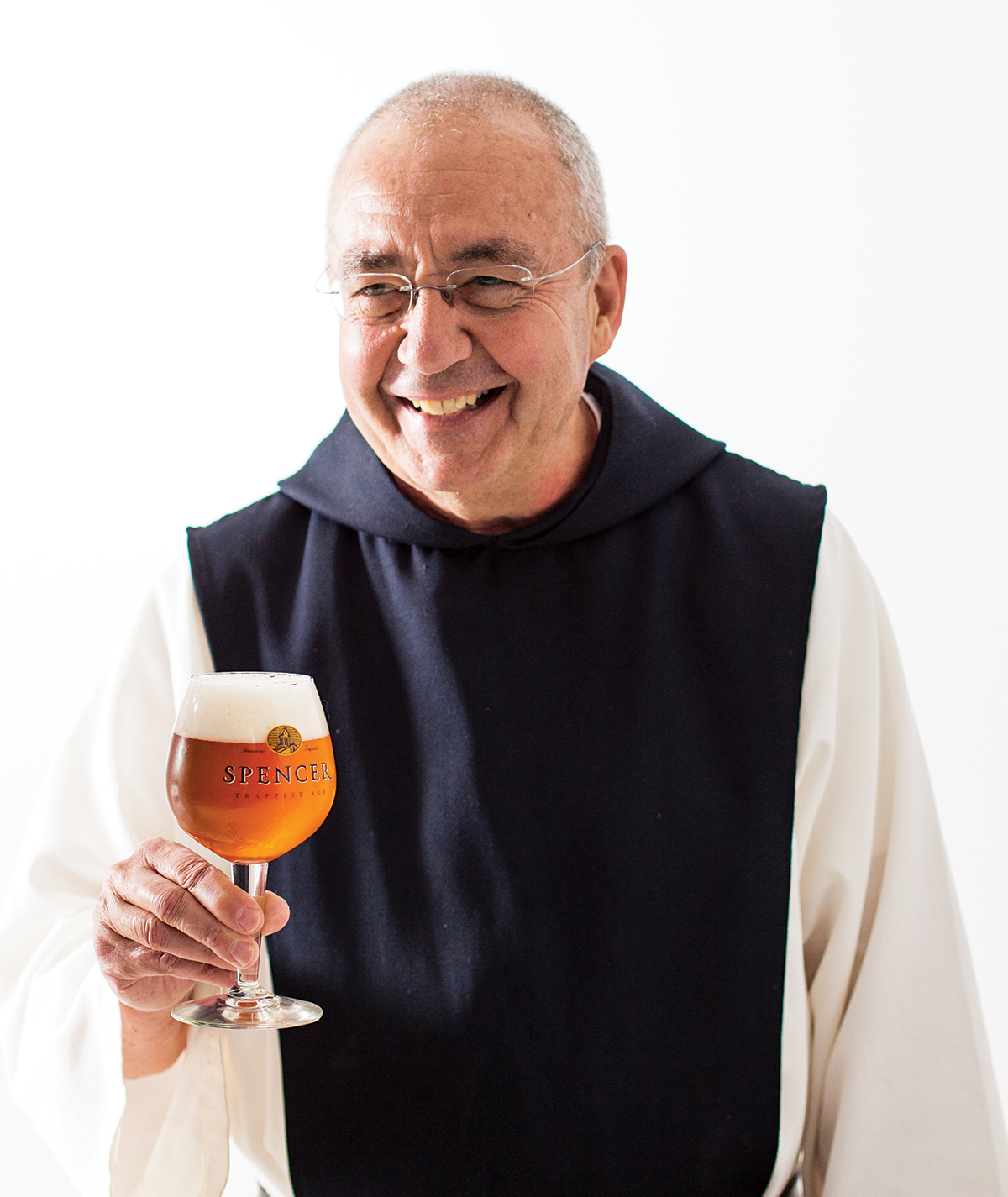Trappist Tale

Father Isaac Keeley has quickly become the face of Spencer Brewery. Photograph by Pat Piasecki.
Father Isaac Keeley, the soft-spoken director of Spencer Brewery, was once a potter. It was this qualification alone, he says, that led to his involvement in creating the first official American Trappist ale. “The idea was that I understood craft, and making something from scratch,” Keeley says from across the table on a sunny afternoon as we sip the mellow, fruity, full-bodied beverage that was more than 10 years in the making.
“Back in 2000, we could see that our expenses were rising faster than our income, because our group is aging,” Keeley says. Up until that point, the primary source of revenue for the Spencer abbey had been the jams, jellies, and marmalades produced and packaged on site for sale nationwide. But “how much jelly do you generally eat in a day?” Keeley asks. “It’s a really niche market.”
For years one of the brothers had been talking about brewing, but the abbey’s board of advisers wasn’t convinced that it’d be profitable. “But he had a really good idea,” Keeley says. “He said, ‘Why don’t we get someone to help us brew a small batch of Trappist beer, bottle it up nicely, and give it to the board as a Christmas gift?’” So they enlisted the help of craft brewers Dann and Martha Paquette, of Somerville’s Pretty Things Beer & Ale Project, who were happy to help the monks sway the judges.
But there was yet another hurdle to clear. In beer culture, “Trappist” is synonymous with top quality, and those who had been brewing the stuff for centuries weren’t about to give the title to just anyone. So the Spencer group made several research trips to Belgium, where six of the world’s 10 Trappist breweries are based, to convince yet another set of skeptics that they were up for the task: the International Trappist Association.
It took some convincing, but eventually their Belgian counterparts offered three conditions for the launch: Build a state-of-the-art brewery with the finest and latest technology, hire a skilled brew engineer, and, for the first five years, make only one type of beer.
Seasoned engineer Hubert de Halleux—who earned his master’s degree in brew science in Belgium—was an obvious choice. “On three separate occasions he’s started breweries from the ground up,” Keeley says. But getting the recipe exactly right took some time and effort.













The challenge was in the details: The monks wanted the beer to resemble the traditional Trappist brews they’d tasted in Belgium while using ingredients sourced only from North America. “For color, we drew on regional imagery, like what the sunrise looks like on the Cape in September,” Keeley says. From there it was mostly trial and error. After 24 test brews, they had nailed the aroma, but they still felt the flavor needed some tweaking.
“The nose was really the guide,” Keeley says. “I call it the golden center. When you drink a Trappist ale, there’s a complexity of tastes that are really hard to pull apart but are rather delicious.” Once he was convinced that “the golden center was there,” he packed a few bottles in his checked luggage and flew to Belgium to get official Trappist approval. “Fortunately, they liked it,” he says.
Nearly a year later, the formula has been digitized, with a computer in the center of the brew house mainly responsible for carrying out the steps of converting starch (barley) into sugar (alcohol). Inside the bottling room on the day of my visit, animated assembly lines are abuzz. Mechanical arms lift and lower bottles, boxes, caps, and labels. Rows of empty bottles snake along an S-shaped conveyor belt and come out the other end topped with foam. At the far end of the room, a space-agey hovercraft lifts 24 cases of beer at once and stacks them six layers high. Out of nowhere all 144 cartons start spinning as they’re covered in shrink-wrap and whisked off to the refermentation chamber. “It’s like Willy Wonka in here!” I exclaim, prompting an eruption of jovial laughter from Keeley.
Actually, he tells me, it’s the automated nature of it all that makes brewing a perfect source of income for the abbey. “As monks we’re not good at managing our diverse workforce,” he says. “This is the kind of work we like to do. You have to be attentive, but it’s relatively recollective and prayerful. Hubert keeps telling me that eventually it’s going to get boring. Well, the monastic side of me thinks, I’m looking forward to the boring.”


